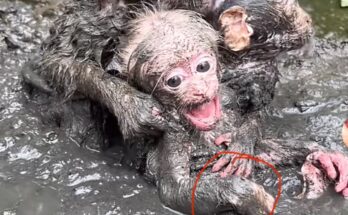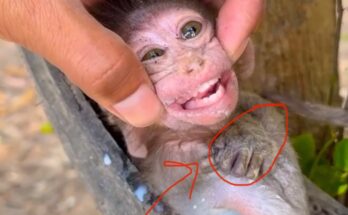Monkeys, like humans, experience a wide range of emotions, including fear. Whether it’s a sudden noise, the presence of a predator, or a confrontation with another monkey, their reactions to fear are varied and fascinating. Understanding these behaviors not only provides insight into their emotional lives but also sheds light on the evolutionary roots of human fear responses.
How Do Monkeys Sense Danger?
Monkeys have highly developed senses, especially sight and hearing, which allow them to detect danger quickly. In the wild, threats can come from many sources — snakes, large birds, big cats, or even humans. When a monkey detects something threatening, its brain initiates an automatic fear response through the amygdala, much like in humans.
Common Fear Reactions in Monkeys
1. Vocalizations
One of the most immediate and noticeable reactions is a loud alarm call. Different species have different types of calls to signal specific threats. For example, a vervet monkey might give one call for a snake and another for an eagle. These vocal warnings are crucial for group survival, allowing other monkeys to take cover or prepare to flee.
2. Freezing
Freezing is another common reaction. A monkey might stop moving entirely and stay still for several seconds or minutes. This can prevent predators from noticing them, especially if the danger is nearby but not yet aware of the monkey’s presence.
3. Flight Response
If the threat escalates, monkeys often flee. Arboreal species (tree-dwelling monkeys) may leap into the trees, using the high branches as cover. Terrestrial species might run to dense vegetation or hide behind rocks. The speed and agility with which they move in these moments are remarkable.
4. Clinging and Huddling
Young monkeys, in particular, will cling tightly to their mothers when frightened. Even adult monkeys may huddle together in groups, seeking comfort and safety in numbers. Grooming, a common social activity, may increase after a fearful event, helping individuals calm down and restore group harmony.
5. Aggression as a Defense
Interestingly, some monkeys react to fear with aggression. They might bare their teeth, scream, or lunge to scare off the threat. This is more common in dominant individuals or when escape isn’t an option. It’s a risky move but sometimes necessary for survival.
Learning Through Fear
Monkeys are intelligent and can learn from fearful experiences. If a young monkey sees an elder reacting to a snake, it may develop a lasting fear of snakes, even if it has never encountered one on its own. This ability to learn fear socially is shared with humans and suggests a deep-rooted survival strategy in primate evolution.
Conclusion
Fear is not just a human emotion — it is a universal survival mechanism, and monkeys demonstrate this vividly. From loud calls to flight, freezing, and even aggressive displays, their responses to fear reflect both instinct and intelligence. By observing these behaviors, researchers gain valuable insights into the emotional complexity of primates and, by extension, ourselves.



